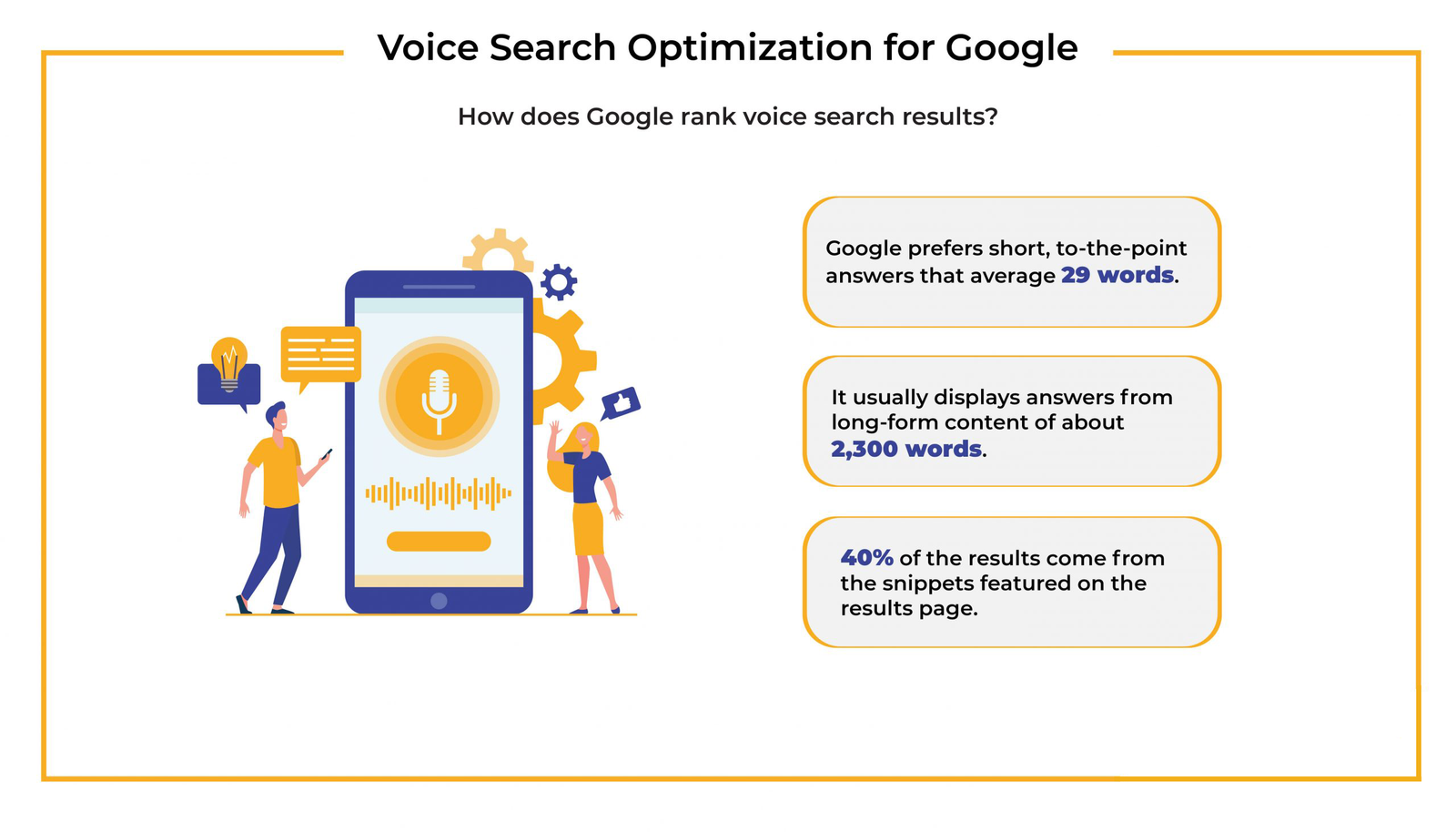Voice Search Optimization is becoming increasingly popular, and it’s important for businesses to optimize their websites for voice search if they want to stay ahead of the competition.
Here are some facts about voice search optimization that you should know:
- Voice search is growing rapidly. In 2022, 50% of the US population used voice search features daily. This number is expected to grow to 65% by 2025.
- Voice search queries are more conversational. When people use voice search, they tend to ask questions in a more natural way. For example, instead of typing “how to make a cake,” they might say “how do I make a cake?”
- Voice search results are more local. When people use voice search, they’re often looking for information that’s relevant to their location. For example, they might ask “where is the nearest coffee shop?”

Here are some best practices for voice search optimization:
- Use natural language keywords. When you’re optimizing your website for voice search, use keywords and keyword phrases that people are likely to use in their voice searches.
- Optimize your title tags and meta descriptions. Your title tags and meta descriptions should be optimized for voice search, just like they are for traditional search.
- Use long-tail keywords. Long-tail keywords are more specific than short-tail keywords, and they’re more likely to be used in voice searches.
- Create content that is conversational in tone. Your content should be written in a conversational tone, so that it sounds natural when it’s read aloud by a voice assistant.
- Include local information. If your business is local, be sure to include your address, phone number, and other local information on your website.
By following these best practices, you can optimize your website for voice search and make it more likely that your website will appear in voice search results.

